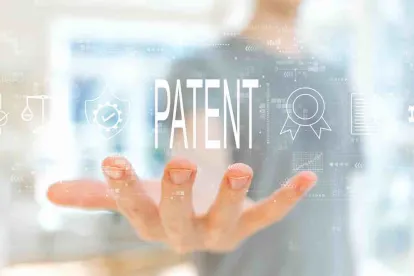The US Court of Appeals for the Federal Circuit affirmed the denial of a defendant’s post-judgment motion for a new trial based on a failure to preserve an O2 Micro challenge. The Court also reversed the denial of a prejudgment interest award to the plaintiff. Kaufman v. Microsoft, Case Nos. 21-1634; -1691 (Fed. Cir. May 20, 2022) (Dyk, Reyna, Taranto, JJ.)
Michael Philip Kaufman brought a patent infringement suit against Microsoft asserting his now-expired patent that covered a method for operating a computer to automatically generate an end-user interface that permit users to interact with data in relational databases (which store data in multiple tables that are related to each other in defined ways). Kaufman alleged infringement by Microsoft’s development tools for the .NET framework software platform, specifically Microsoft’s Dynamic Data product that allegedly automatically generated a web application for viewing and editing data. A jury found Microsoft liable for infringement and awarded $7 million in damages. Post-trial, Microsoft moved for judgment as a matter of law and a new trial, arguing that the district court failed to resolve claim construction disputes before trial and that Microsoft was therefore entitled to a new trial under 02 Micro. Kaufman moved for prejudgment interest. Both motions were denied, and both sides appealed.
Microsoft argued that the district court erred by not clarifying the claim term “automatically” and that a new trial was warranted under O2 Micro because the clarification reasonably could have led the jury to a different verdict. The Federal Circuit disagreed, explaining that Microsoft failed to preserve its O2 Micro challenge by not pursuing the matter at the jury instruction phase. The Court reasoned that the parties did not request a construction of “automatically” during the original Markman proceeding, nor did Microsoft propose a definition of “automatically” in its proposed jury instructions defining the term. Further, in its summary judgment briefing, Microsoft only said that there was a “fundamental legal dispute” as to the definition of “automatic.” Microsoft never clearly stated that a construction was needed on the term or offered the district court a formulation of such a claim construction. Microsoft also never defined a proposed construction for the term that would accommodate its action after trial. While the Court allowed that a claim construction issue does not always need to be re-raised in the specific setting of making proposals for, or airing objections to, jury instructions, that exception is limited to situations where the issue was sufficiently raised and settled earlier. The Court explained that application of that principle was settled in O2 Micro, “referring to circumstances in which the claim-construction position of the appellant was ‘made clear to the district court,’ a further objection would have been ‘not only futile but unnecessary,’ and the issue was ‘fully litigated and decided at the Markman stage of the litigation.’”
Turing to Kauffman’s appeal, the Federal Circuit reversed the denial of prejudgment interest. The district court had reasoned that the jury verdict “subsumed interest” and that Microsoft was prejudiced by Kaufman’s undue delay (of five years) in bringing the lawsuit. However, the Court determined that the jury verdict could not have reasonably been understood to include interest because all the expert testimony was in relation to the amount Microsoft would have paid in 2011—and no testimony would have provided any basis for calculating interest. The jury verdict could not have “subsumed interest” when no basis was given for how to include interest. As for undue delay, the Court determined that the five-year hiatus after Kaufman became aware of the potential infringement was not enough, on its own, to justify a finding of undue delay. The Court explained that Microsoft did not adequately support a finding of prejudice by the delay. The Court concluded that Microsoft’s argument that it might have altered Dynamic Data to not infringe was not sufficient and was not credited by the jury in its finding that Microsoft would have paid $7 million to license the patent.




 />i
/>i

